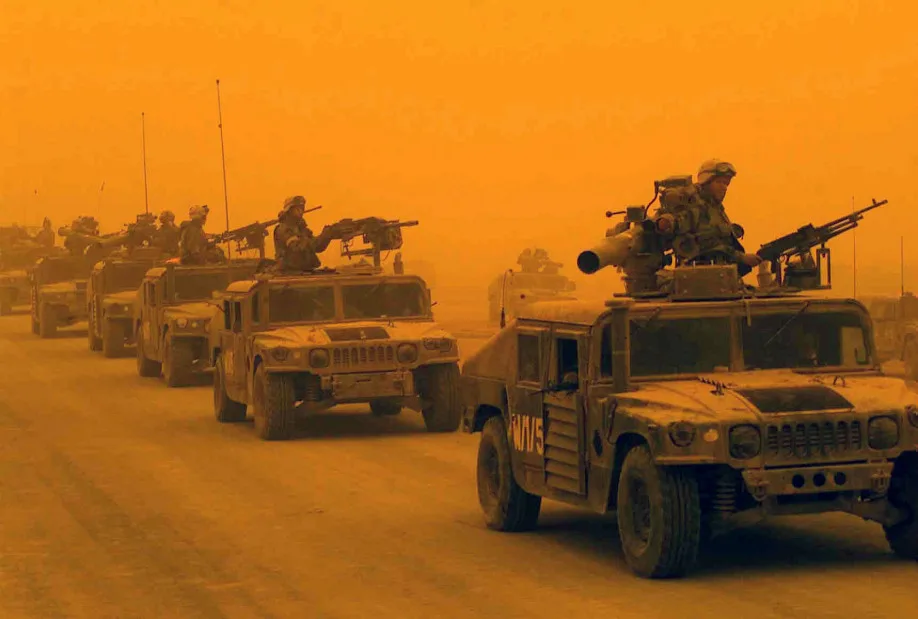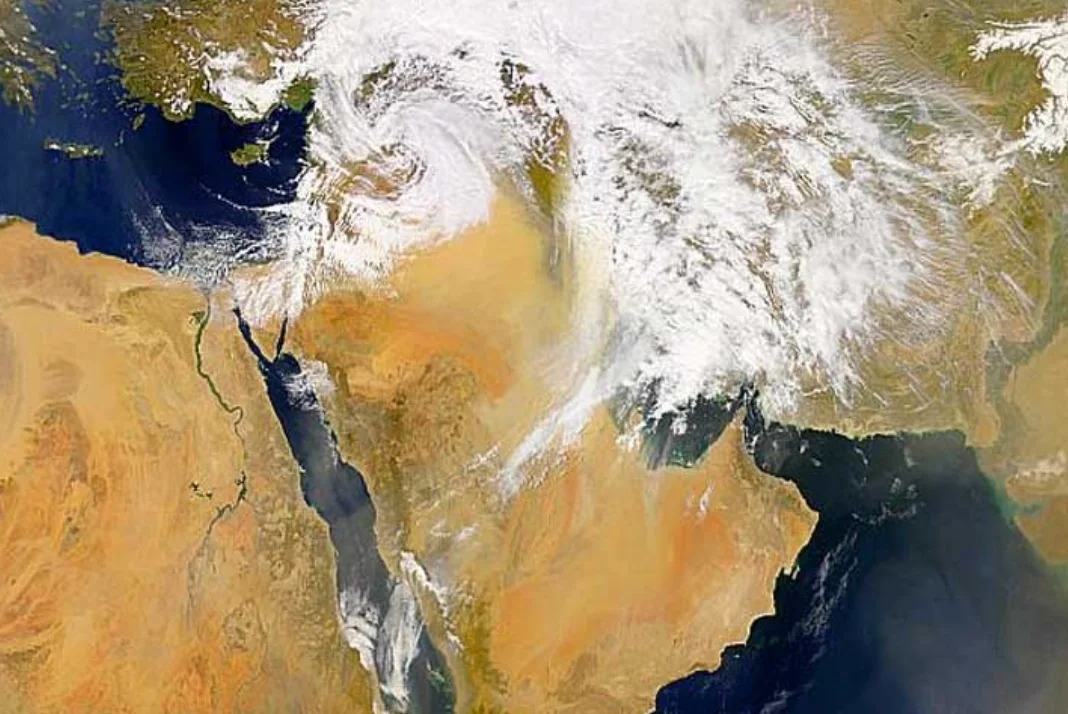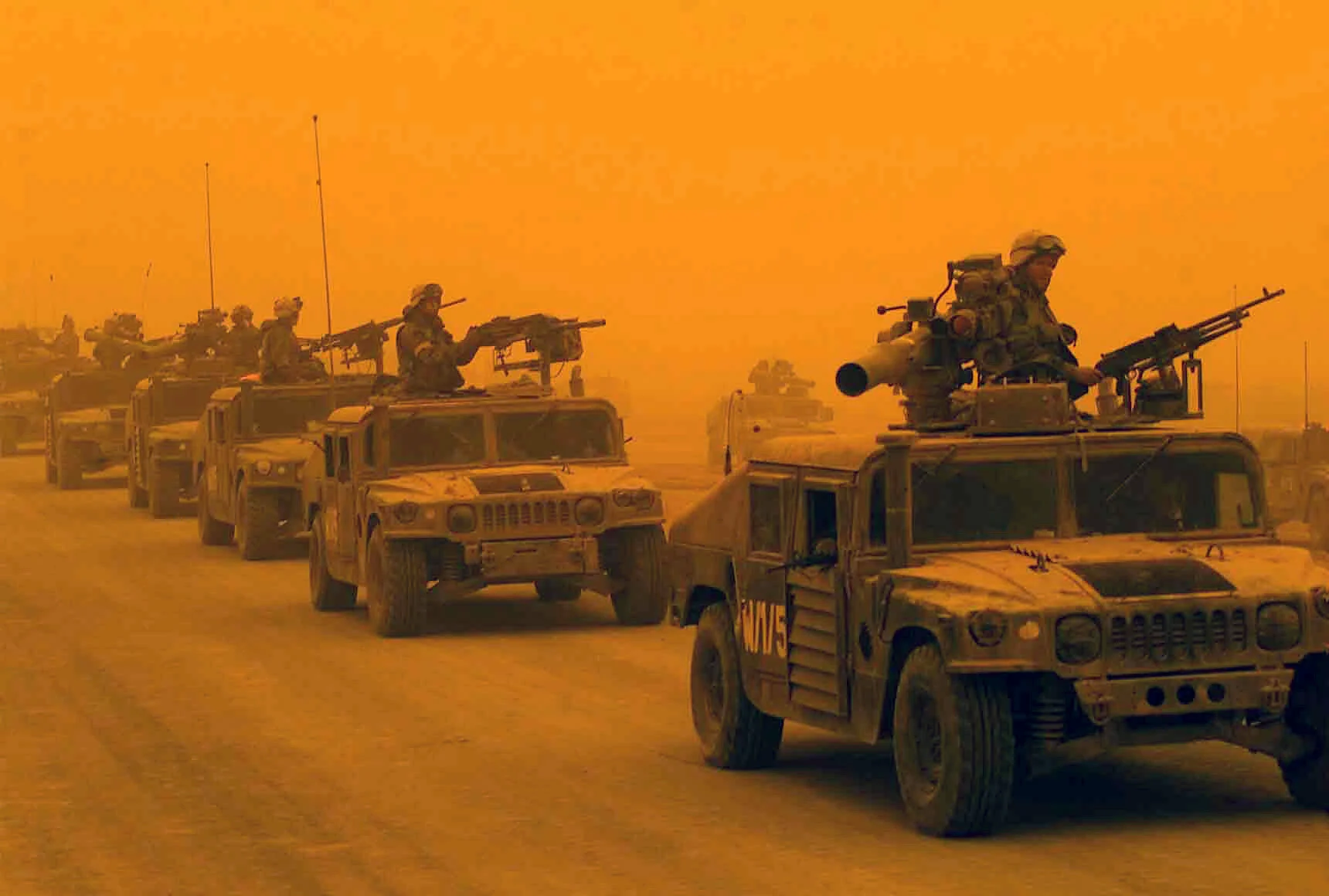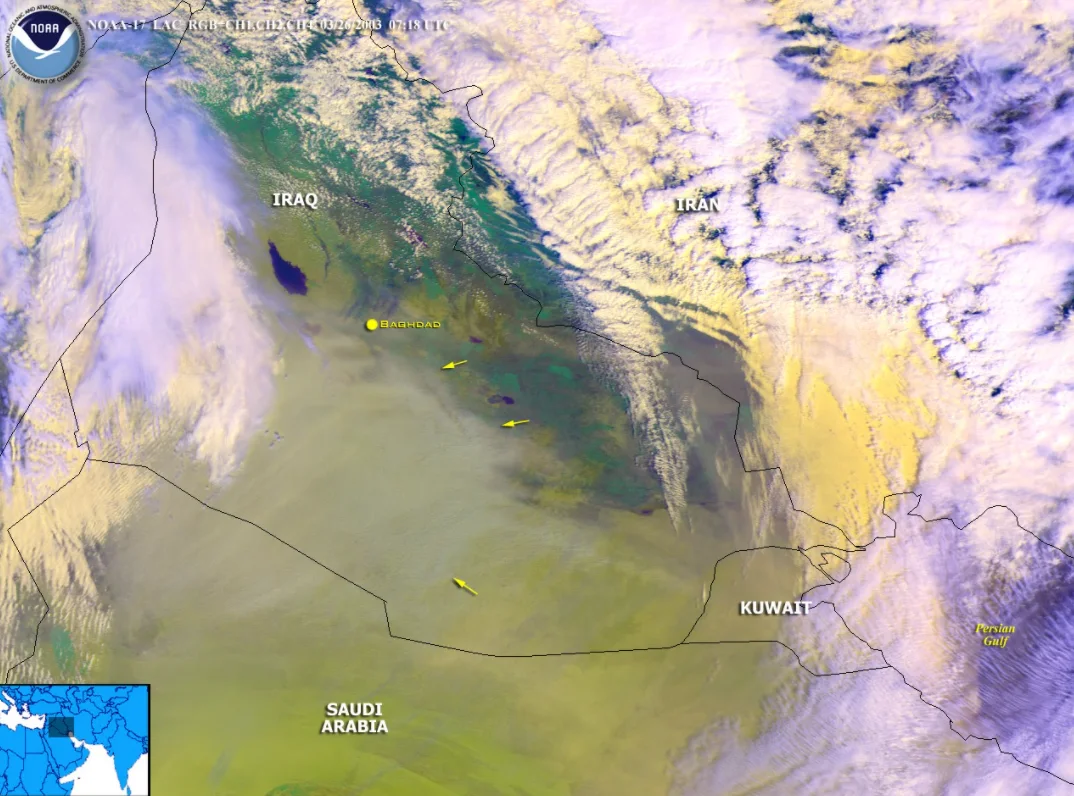
How a sandstorm helped the coalition forces during 2003 invasion of Iraq
On this day in weather history, a low-pressure system caused a sandstorm during the Iraq war.
This Day In Weather History is a daily podcast by Chris Mei from The Weather Network, featuring stories about people, communities and events and how weather impacted them.
--
On March 25, 2003, a low-pressure system dragged sand and dust from the Saudi Arabian and Egyptian deserts to Iraq. This was five days after the 2003 invasion of Iraq (the first stage of the war) had begun.
General Tommy Franks led the mission and attributes the sandstorm as a key event in the Iraq war.
The sandstorm was predicted, but the severity was not. The sky suddenly turned a reddish-brown as thick dust and sand took over southern Iraq. There were 170,000 coalition troops in the area.

Low Pressure System over the Middle East on March 26, 2003. Courtesy of NASA
Visibility quickly reduced to 10 metres or less. And when it rained, the dust in the air turned to mud.
On the ground, the infantry units continued with their mission during breaks in the sandstorm. The teams were able to identify the exact GPS co-ordinates of the enemy armour and artillery.

Iraqi sandstorm. Courtesy of Wikipedia
But the sandstorm worsened and the mission had to come to a halt. Commander Gene Renuart approached Franks and suggested that they take advantage of the poor weather conditions, namely "destroy the Republican Guard formations."
Click here to subscribe to This Day in Weather History
The enemy hadn't moved in 16 hours, so it was an opportune moment to strike. And though ground artillery couldn't be mobilized, planes were able to fly over the sand and deliver precision-guided bombs through the zero-visibility weather.

Baghdad, Iraq. Courtesy of NOAA
The "kill zone" stretched from Al Kut in the Tigris Valley to the Karbala gap. As the sand continued, the enemies were being destroyed.
The bombardment lasted from the night of March 25 to the morning of March 27. It wasn't widely covered by the media because there were no correspondents in the cockpits of the strike planes or the targeting areas in the air operations centre.
The 2003 invasion of Iraq lasted from Mar. 20 to May 1, 2003. There were approximately 30,000 Iraqi combatant fatalities, 7,269 Iraqi civilian fatalities, and 238 coalition fatalities.
To learn more about the sandstorm during the 2003 Iraq war, listen to today's episode of "This Day In Weather History."
Subscribe to 'This Day in Weather History': Apple Podcasts | Amazon Alexa | Google Assistant | Spotify | Google Podcasts | iHeartRadio | Overcast'
Thumbnail: Iraqi sandstorm. Courtesy of Wikipedia










